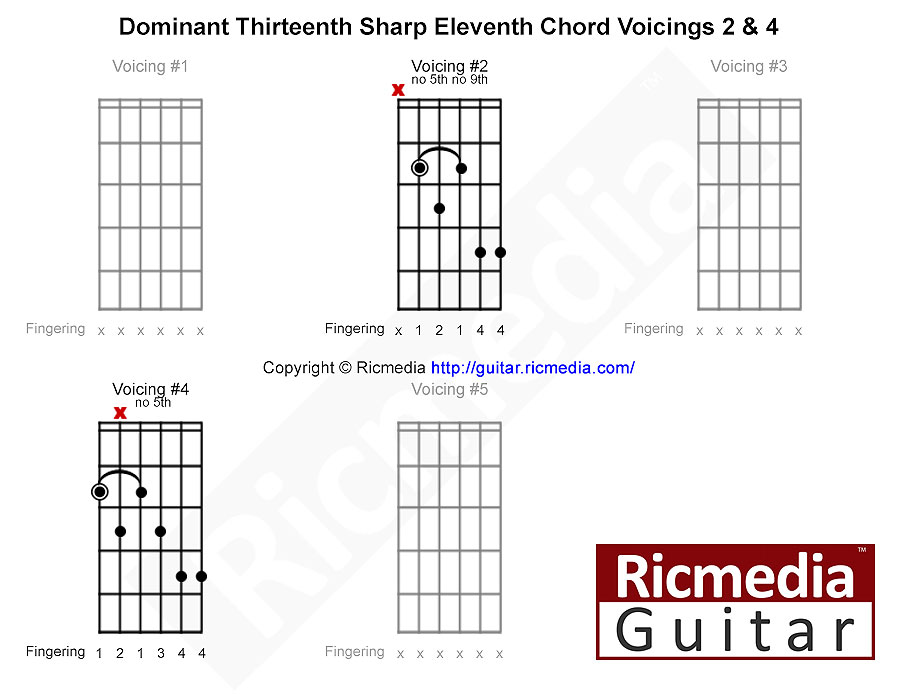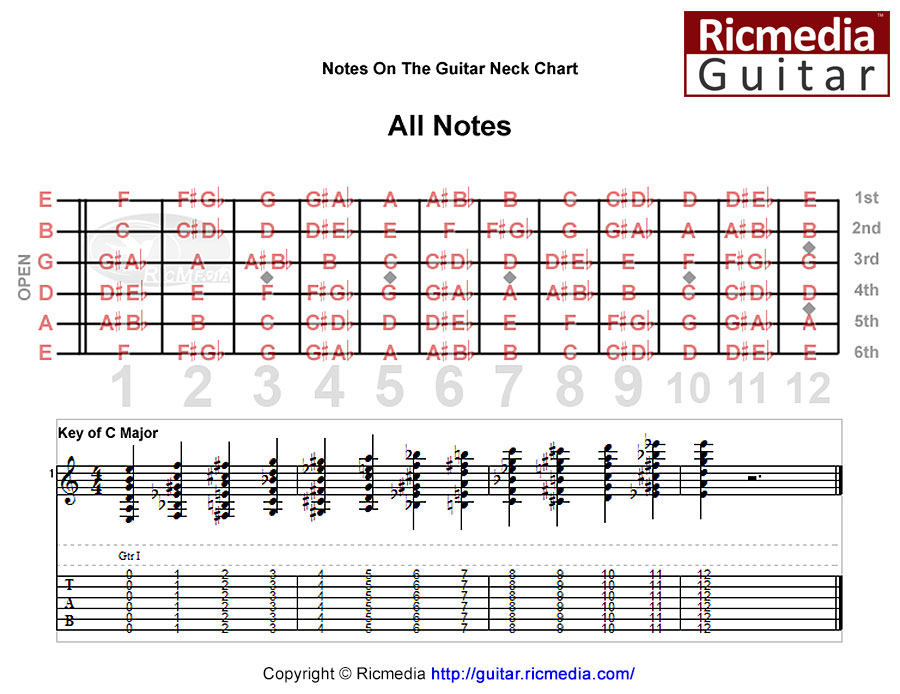A dominant thirteenth sharp eleventh chord is composed using a root/1st, major 3rd, perfect 5th, minor 7th, major 9th, augmented 11th and major 13th (or R/1-3-5-♭7-9-♯11-13) intervals played simultaneously. Generally written as C13(♯11) or Cdom13(♯11), it is good practice to simply use an uppercase C followed by a super scripted 13(♯11) to represent it in writing (ie: C13(♯11)).
A dominant thirteenth sharp eleventh chord comes about due to the dissonance created between the major third and perfect eleventh (perfect fourth) intervals in a dominant thirteenth chord voiced with an eleventh interval included. Normally, we omit the eleventh from major and dominant thirteenth voicings due to this dissonance, and limitation of six notes on a six string guitar, alternatively we can sharpen the eleventh and remove the fifth or ninth intervals, the dominant thirteenth sharp eleventh chord is a result of this latter process.
Dominant thirteenth sharp eleventh chord profile
| Intervals | root/1st, major 3rd, perfect 5th, minor 7th, major 9th, augmented 11th, major 13th or R/1-3-5-♭7-9-♯11-13) |
|---|---|
| Stability | Dissonant, unresolved |
| Grouping class | Heptad (commonly played as a Hexad or Tetrad on guitar) |
| Common names (examples in C) | C13(♯11), Cdom13(♯11) |
Chord shapes/voicings
Audio sample(s)
| C Dominant thirteenth sharp eleventh chord voicing #4 |
|---|




Leave a Reply